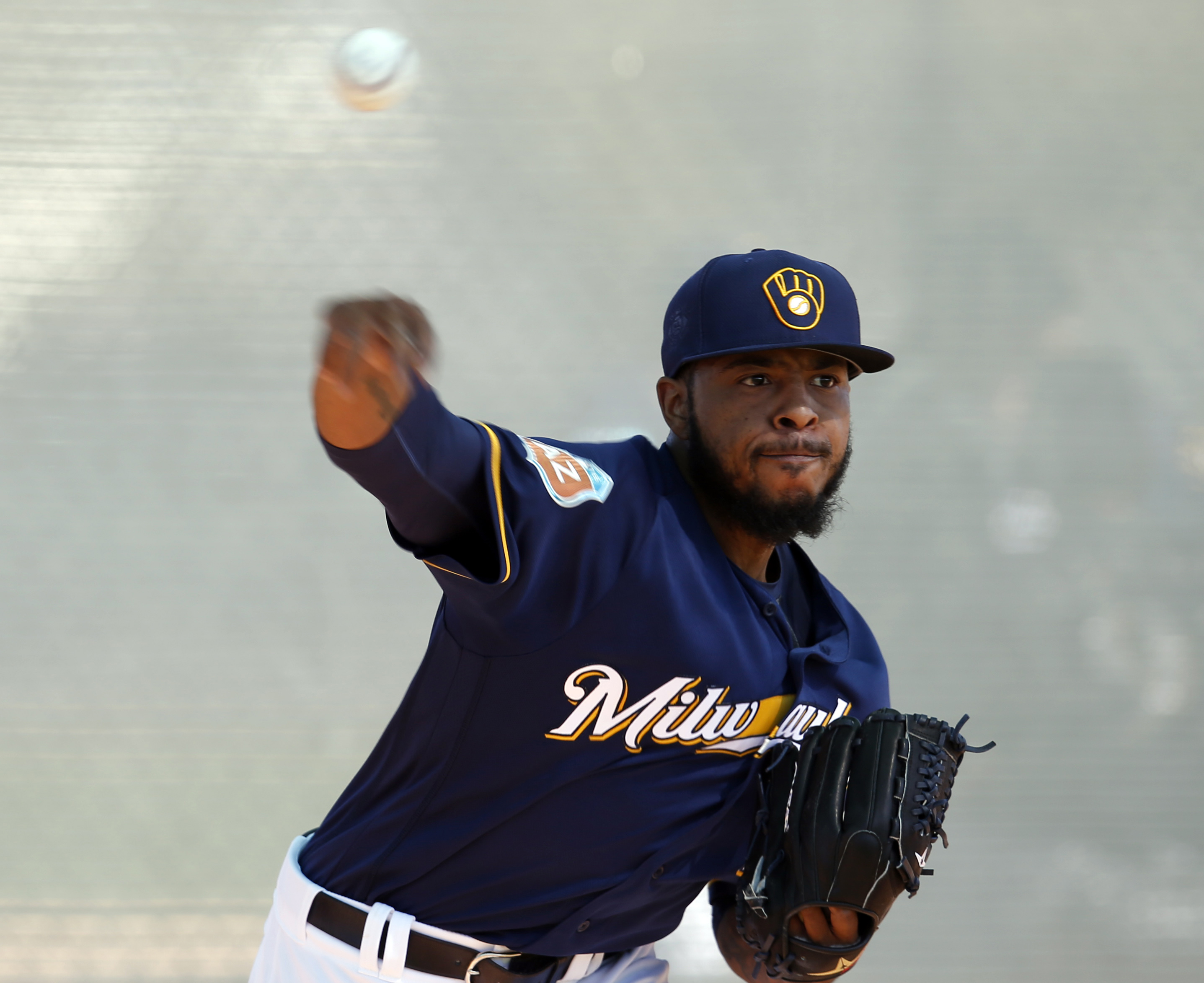In his first full big league season, Jeremy Jeffress impressed at the back of the Brewers’ bullpen. A 28-year-old reliever who had never thrown more than 35 big league innings in a single season, Jeffress proved to be a reliable seventh- and eighth-inning option. And with the departure of closer Francisco Rodriguez, he will join Will Smith as co-closers to begin the 2016 season.
Relievers are generally unpredictable, so on some level attempting to predict Jeffress’s success is a fool’s errand, particularly given his lack of a big league track record (his last appearance on a preseason Top 100 was before the 2011 season). His 3.14 career ERA and 96 cFIP are good but not great, and they are heavily weighed down by his subpar first three years. Last year, though, he took a step forward, and given that his 68 2015 innings accounts for nearly half of his career total, it wouldn’t be unreasonable to think that he is closer to the pitcher he proved to be last year rather than the sum of his career totals.
But is that really the case? Did Jeffress demonstrate some new skill in the last two years that suggests he may actually be this good? Kind of.
As is generally the case for pitchers who see sudden spikes in performance, his whiff rate went up in 2015. It’s tough to truly compare any of his big league performance across years because of his tiny sample sizes in previous seasons, but the fact that the whiff rates from all of his pitches shot up last year is undeniably a good thing. Unsurprisingly, this tracked his strikeout rate, which also went up and was 1.5 percentage points above his career mark.
Jeffress also continued his trend of being a ground ball pitcher, which helps keep the ball in the park and prevent home runs. His 59.59 percent ground ball rate was good for 21st in baseball among pitchers with at least 60 innings, and that number itself is clearly indicative of a talent that he has, as his career mark is 59 percent and he allowed fewer than one home run per nine innings during his minor league career.
The part of his game that held Jeffress back in the minor leagues was his command; he walked over five per nine innings during his minor league career, and he never posted a walk rate below 4.4 in his limited big league innings until 2014. However, his 2.8 mark in 2014 and 2.9 mark in 2015 are encouraging. If he has figured out his control enough to force batters to swing, he can use his excellent stuff to generate swings-and-misses or weak contact.
That, then, is likely the big question. Unfortunately, we don’t really have an answer beyond his walk rate because of his lack of a big league history. His “grooved pitches” measurement on Brooks Baseball does not show a demonstrable difference between 2015 and the rest of his career, but–again–we lack proper perspective, and this information is not gathered at the minor league level. But his zone percentage last year was 45.5 percent, which was below both league average and his career mark and is therefore not a good sign.
An unsatisfying conclusion to this article is that we simply don’t know if Jeffress has changed. He does have an impressive pedigree as a first-round pick, but he was drafted ten years ago and that simply no longer matters. He has lost any upside aside from the general unpredictability associated with being a power righty in the bullpen, and his years toiling in the minor leagues means that we don’t have a ton of legitimate data to analyze.
The information we do have is mixed. He was clearly a good pitcher in 2015, and his climbing whiff rate and decreasing walk rate bode well. However, it’s unclear whether he has actually solved his control problems or whether he simply had a good stretch of 90 innings. Such random events do happen. And until we get further data from the Pitch F/X cameras, we won’t truly know.
